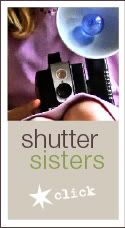The photos in this first set were all taken outdoors. No flash was used for any of them. I changed the ISO settings. I changed the Auto White Balance to the Shade setting for a few of them.

Photo 1:
1/25
f/3.5
ISO 100
AWB
No Flash

Photo 2:
1/125
f/7.1
ISO 1600
AWB
No Flash

Photo 3:
1/80
f/5.6
ISO 400
AWB
No Flash

Photo 4:
1/80
f/5.6
ISO 400
WB - Shade setting
No Flash

Photo 5:
1/160
f/8.0
ISO 1600
AWB
No Flash

Photo 6:
1/40
f/4.0
ISO 100
AWB
No Flash
This next set of photos was taken indoors of a human subject. I took these to show the difference between AWB, Florescent, and Tungsten. All of these photos used flash (+0). While the shot taken with AWB looks fine, you can see the yellow tint (especially in the background). The photo is best when using the Florescent setting. This setting works because of the florescent lighting in the room. It is the photo that looks the most like what you see with your own eyes.

Photo 7:
1/60
f. 5.6
ISO 400
AWB - Tungsten Setting
Flash Fired (+0)

Photo 8:
1/60
f/5.6
ISO 400
AWB - Fluorescent
Flash Fired (+0)

Photo 9:
1/60
ISO 400
AWB
Flash Fired (+0)
The final set of photos are still life images of pens. With this set, my primary focus was seeing how changing the ISO setting would change the images. I shot a full round without flash, and then a another full round with flash. I definitely learned to avoid flash whenever possible. The flash is too harsh and washes out the color. I would rather have a more natural looking image even it means more noise is the compromise for avoiding flash.
Photos 10 -14 used no flash. The ISO setting was changed from: 100, 200, 400, 800, and 1600. Each image was also shot using the Fluorescent setting and was shot using f/5.0, except for the image that was set to an ISO of 1600 (f/6.3). The shutter speed changed with each ISO change. That information is beside each image.

Photo 10:
1/10

Photo 11:
1/15

Photo 12:
1/40

Photo 13:
1/60

Photo 14:
1/80
Photos 15 - 19 used flash (+0). The ISO setting was changed from: 100, 200, 400, 800, and 1600. Each image was also shot using the Fluorescent setting and was shot using f/5.6. The shutter speed changed with each ISO change. That information is beside each image.

Photo 15:
1/60

Photo 16:
1/60

Photo 17:
1/60

Photo 18:
1/80

Photo 19:
1/100
This was a very educational challenge for me. I learned many things about my camera! I also learned so many things that will help me take better photographs. There were a few pictures from this week that got me thinking ahead to the full manual modes. I really liked the still life photos, but I could easily see that the focus point was crisp, but other pens were not. In landscape mode from last week, they would have all been in focus, but not true with this week's settings. I know there must be a way in manual to get the correct white balance as well as have every single pen in focus (which has to do with the depth of field). So that's my photography journey this week.












2 comments:
Great series of pictures. The best thing about digital is you get to see cause and effect pretty fast.
That is a definite bonus!
Post a Comment